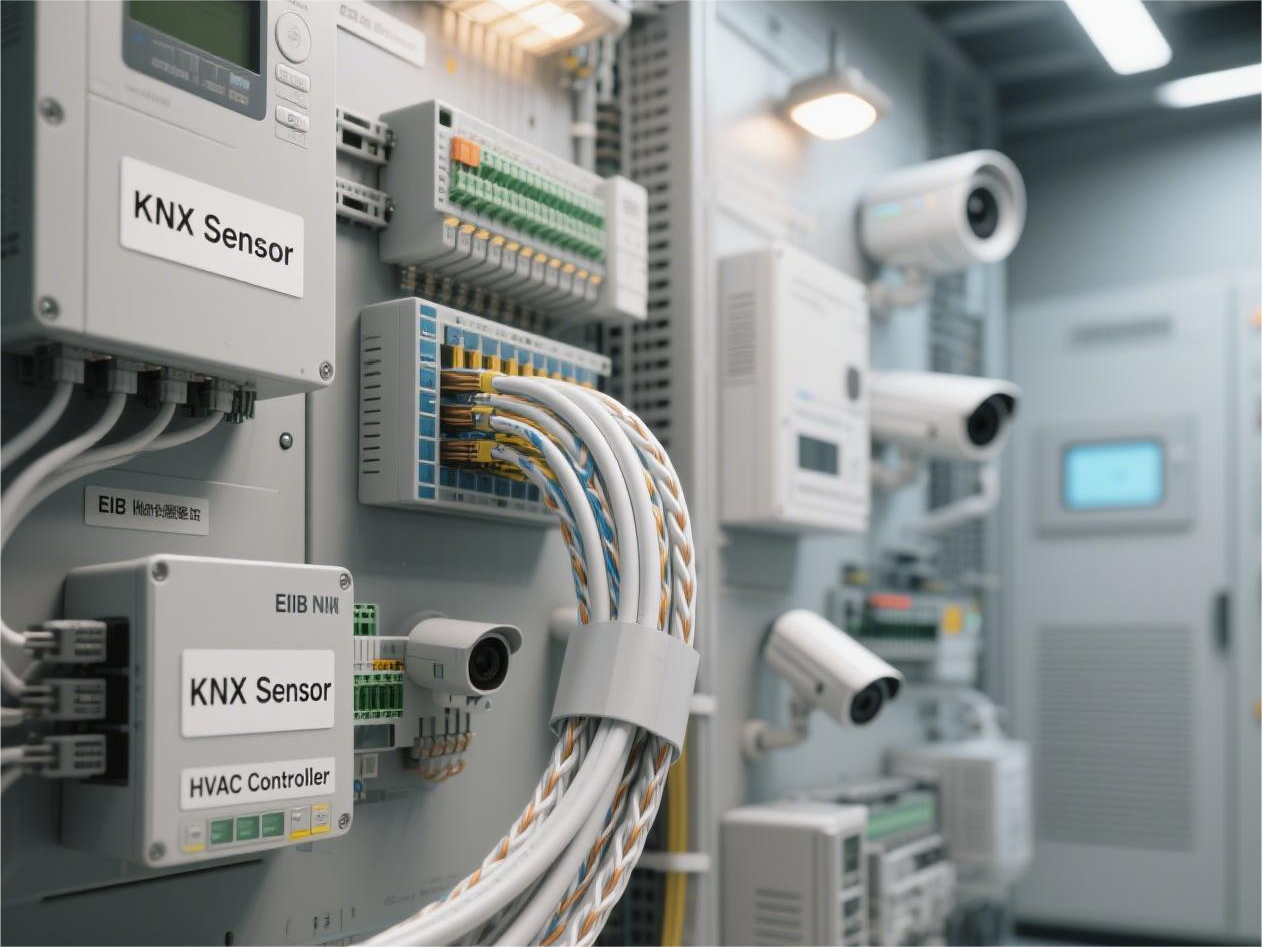In today’s world of smart buildings and homes, the efficiency and success of automation systems rely heavily on the quality and structure of the wiring. At the heart of these systems are EIB/KNX cables, specially designed to transmit data and signals seamlessly between devices.
These cables form the backbone of modern building automation, ensuring devices such as sensors, actuators, and controllers communicate effectively. With the demand for smart automation on the rise, understanding the wiring structure of EIB/KNX cables is crucial for anyone involved in design, installation, or maintenance.
In this guide, we’ll break down the components that make up EIB/KNX cables, explain their unique wiring structure, and show how they contribute to robust automation systems. From their layers and specifications to practical applications and installation tips, you’ll gain a complete understanding of why premium cables are key to maximizing performance.
An EIB/KNX cable is a specialized cable designed to meet the needs of building and home automation systems. Developed for compatibility with the KNX standard, these cables ensure reliable communication between devices, such as light switches, motion detectors, and HVAC controllers, all connected through a single bus cable.
Purpose: Acts as a medium for transmitting signals between devices on an automation network.
Global Compliance: Built according to the international KNX standard (ISO/IEC 14543-3), making it universally recognized and compatible.
Durability: Constructed with high-quality materials to meet the demanding requirements of modern automation systems.
With EIB/KNX cables, automation systems can reduce wiring complexity, minimize interference, and enable flexible scaling of devices as needed. These cables are essential for ensuring automation systems operate smoothly and efficiently, making them an integral part of smart building infrastructure.

The wiring structure of EIB/KNX cables is pivotal to their reliability and performance. Let’s dive into their specific layers, components, and the role each part plays in facilitating seamless communication.
EIB/KNX cables are constructed with the following key components:
Conductor Core:
Made of high-quality copper for excellent electrical conductivity.
Often consists of two twisted pairs of wires (4 cores total), with one pair carrying data signals and the other supplying low-voltage power.
Insulation Layers:
Surrounds the conductor to provide electrical safety and prevent short circuits.
Typically made of materials like polyethylene for durability.
Shielding:
Protects the cable from electromagnetic interference (EMI) caused by nearby electrical systems.
Ensures data signals remain intact, even in environments with high electrical noise.
Outer Jacket:
The external layer that protects the cable from mechanical damage, moisture, and environmental factors.
Designed for rugged durability, ensuring long-term performance indoors and outdoors.
EIB/KNX cables follow a twisted-pair design where two conductors are twisted around each other.
Benefits of Twisted Pair Technology:
Reduces signal degradation and prevents interference.
Ensures reliable communication over longer distances.
Adheres to the KNX TP1 standard, which is widely used in building automation.
EIB/KNX cables often include color-coded wires for easier identification and installation.
Color Coding:
Red and black: Power conductors (30V DC).
Yellow and white: Data signal conductors.
Specifications:
Voltage: Operates at low voltage (typically up to 30V DC).
Wire Diameter: Common sizes include 20 to 22 AWG.
Shielding: Aluminum foil or similar material for EMI protection.
This robust wiring structure ensures EIB/KNX cables deliver the performance and reliability needed for advanced automation.
EIB/KNX cables play an essential role in transmitting data and power across an entire building automation system.
The KNX bus system is designed around a single bus cable that connects all devices in a daisy-chain topology. Here’s how it works:
Single Communication Line: All devices (e.g., switches, thermostats, motorized blinds) are linked to a common bus cable, reducing the need for multiple wires.
Signal and Power Separation: Separate twisted pairs carry communication signals and power to ensure optimal performance and minimal interference.
Scalability: The KNX bus system allows for easy expansion, so more devices can be added without significant wiring changes.
Reduced Complexity: Minimizes the need for complex wiring layouts.
Flexible Installation: Supports both small residential systems and large commercial projects.
Energy Efficiency: Lower power consumption due to optimized wiring.
By simplifying the wiring process while ensuring reliable communication, EIB/KNX cabling enables seamless operation of automation systems.
EIB/KNX cables are versatile and adaptable to various applications in smart buildings and homes.
Lighting Control: Automate indoor and outdoor lighting for energy savings and convenience.
HVAC Management: Optimize heating, cooling, and ventilation systems for maximum comfort.
Security Systems: Integrate alarms, motion sensors, and cameras into a single, cohesive network.
Shading Systems: Automate blinds and shutters for better energy efficiency and lighting control.
Residential: Smart homes with IoT integrations.
Commercial: Office buildings, hotels, and retail spaces.
Industrial: Factories and warehouses requiring advanced automation.
These applications highlight the adaptability of EIB/KNX cables to diverse automation needs.
The reliability of your automation system depends on the quality of the cables used. Here’s why echuwirencable.com is your top choice:
KNX-Standard Compliance: All cables meet KNX guidelines, ensuring global compatibility.
Durability: Built to withstand environmental challenges, including EMI and wear.
Customized Solutions: Tailored to meet your unique project needs, whether residential, commercial, or industrial.
Explore our premium range of EIB/KNX cables. With our top-tier products, you can trust that your projects will perform at their best.
Proper installation is crucial to ensure the effectiveness of EIB/KNX systems. Here are a few tips:
Use the Right Tools: Avoid damaging the insulation during installation.
Maintain Proper Distances: Keep EIB/KNX cables away from high-voltage power cables to minimize interference.
Guarantee Proper Shielding: Ensure shielding is intact to prevent EMI issues.
Consult Experts: For large or complex systems, work with certified installers for professional results.
EIB/KNX cables are the lifeline of modern automation systems, enabling seamless communication and reliable performance. From their structured wiring to their applications in lighting, HVAC, and security systems, these cables simplify building automation while enhancing efficiency.
For high-quality, KNX-standard cables designed for superior durability and performance, come find from ECHU. Let us help you power your automation projects with the best cabling solutions in the market.

